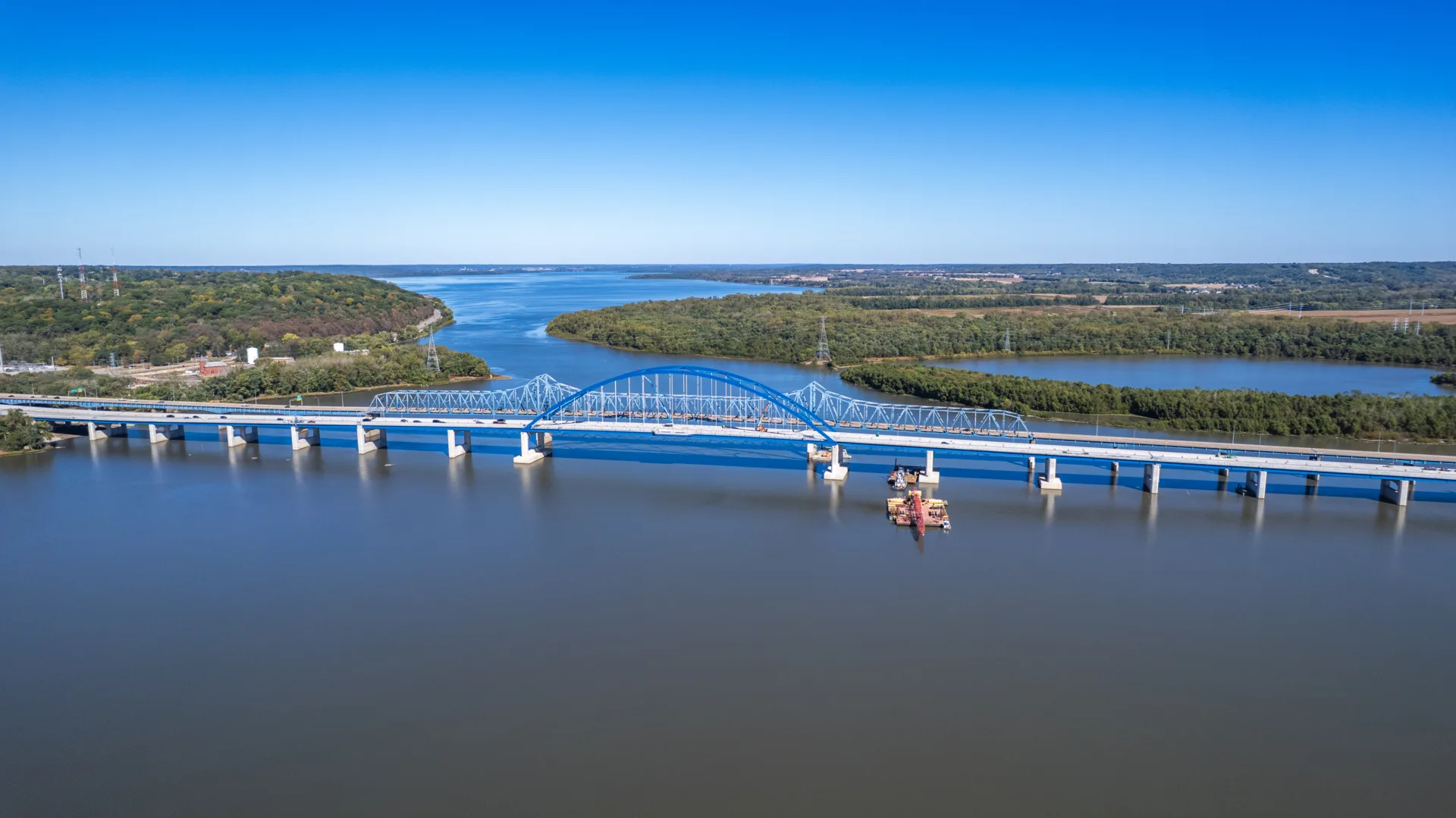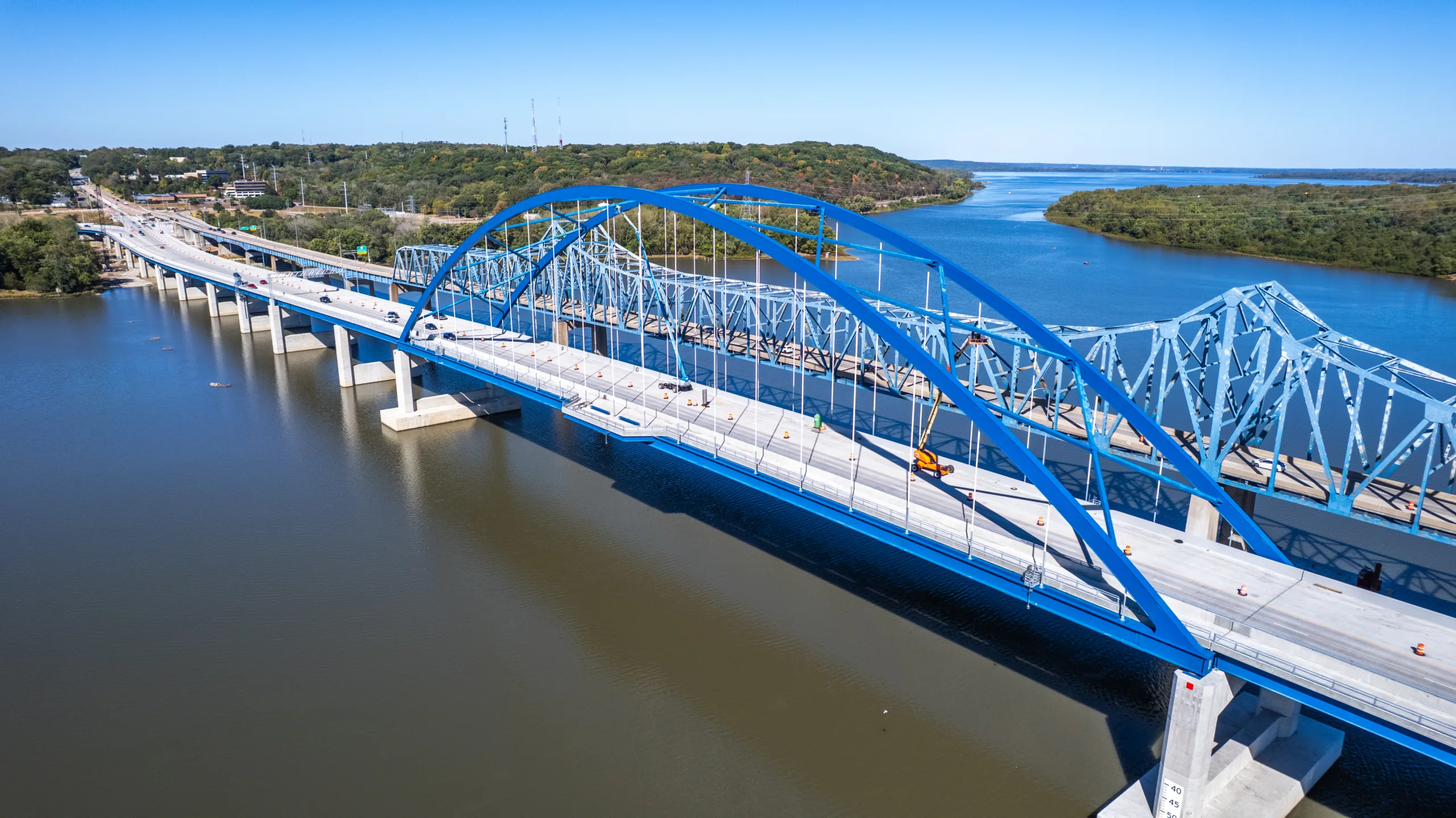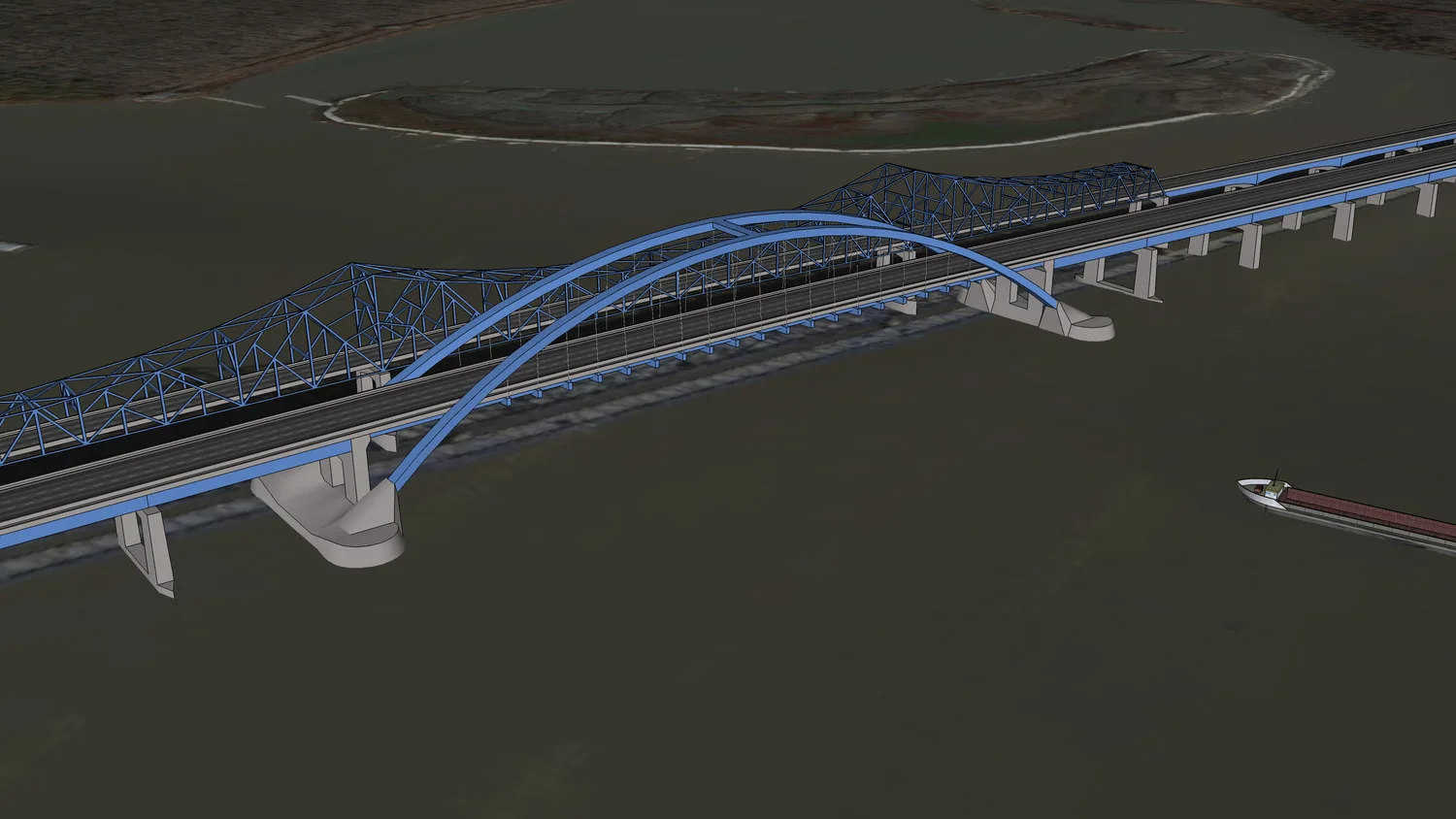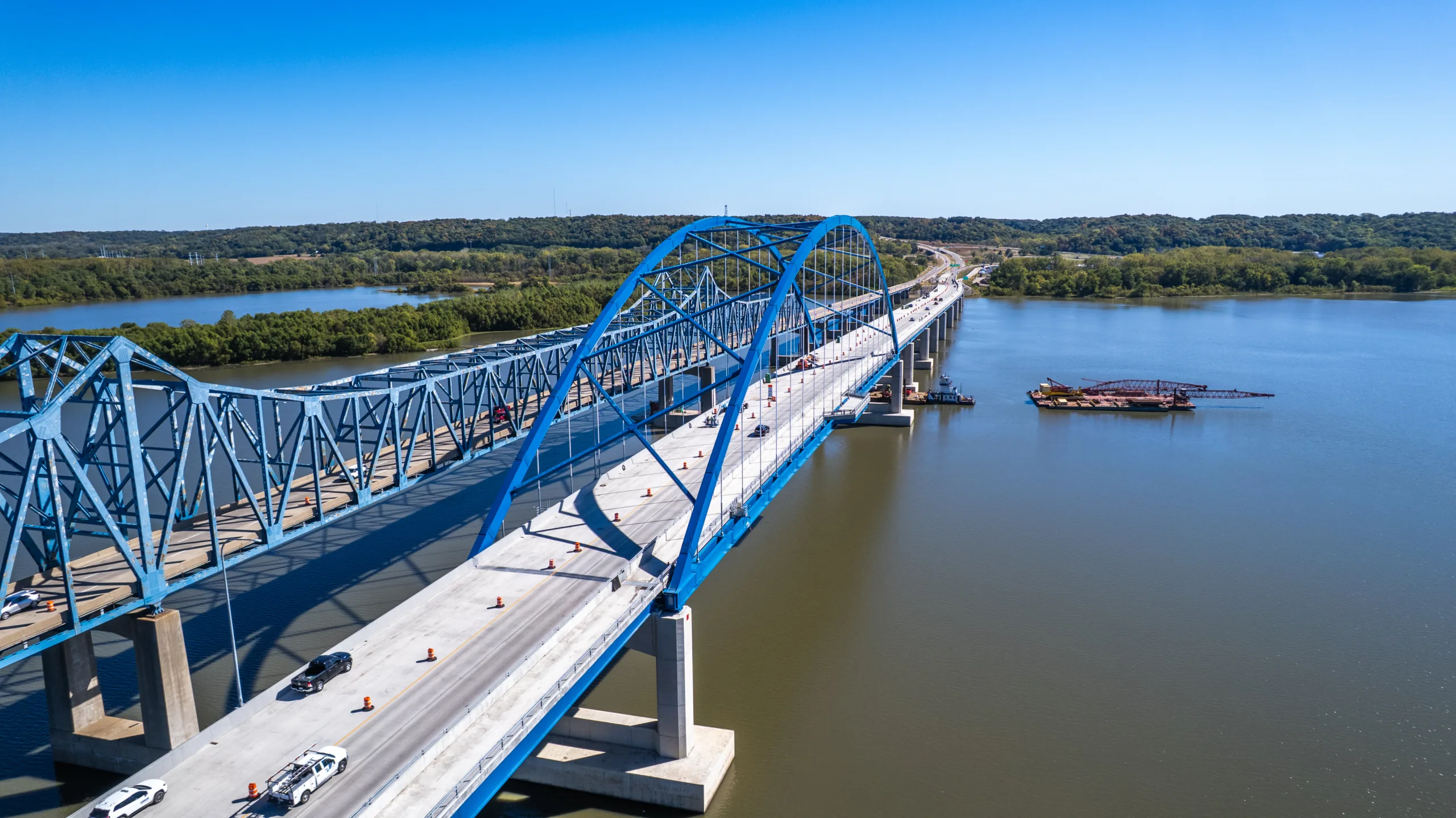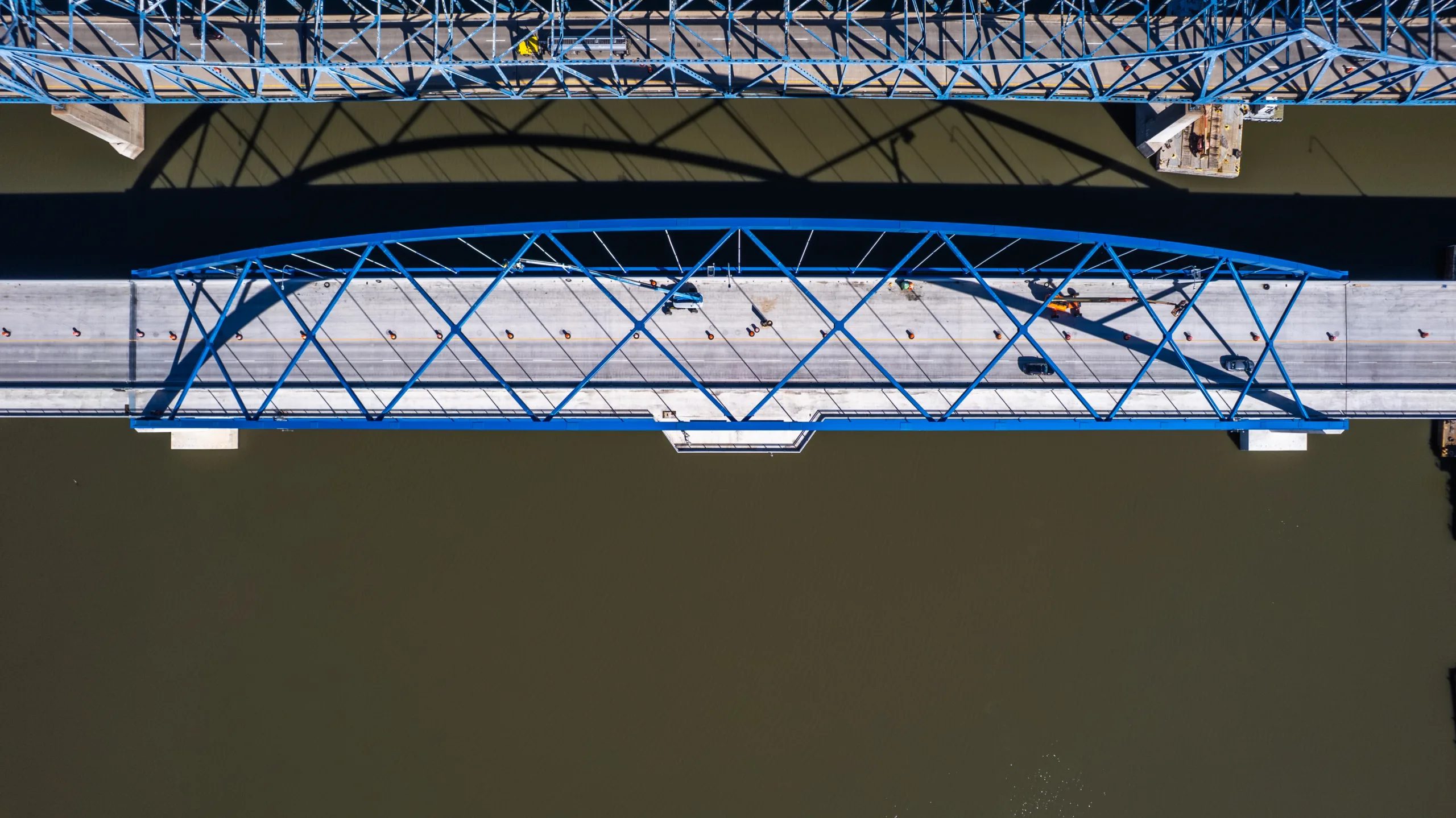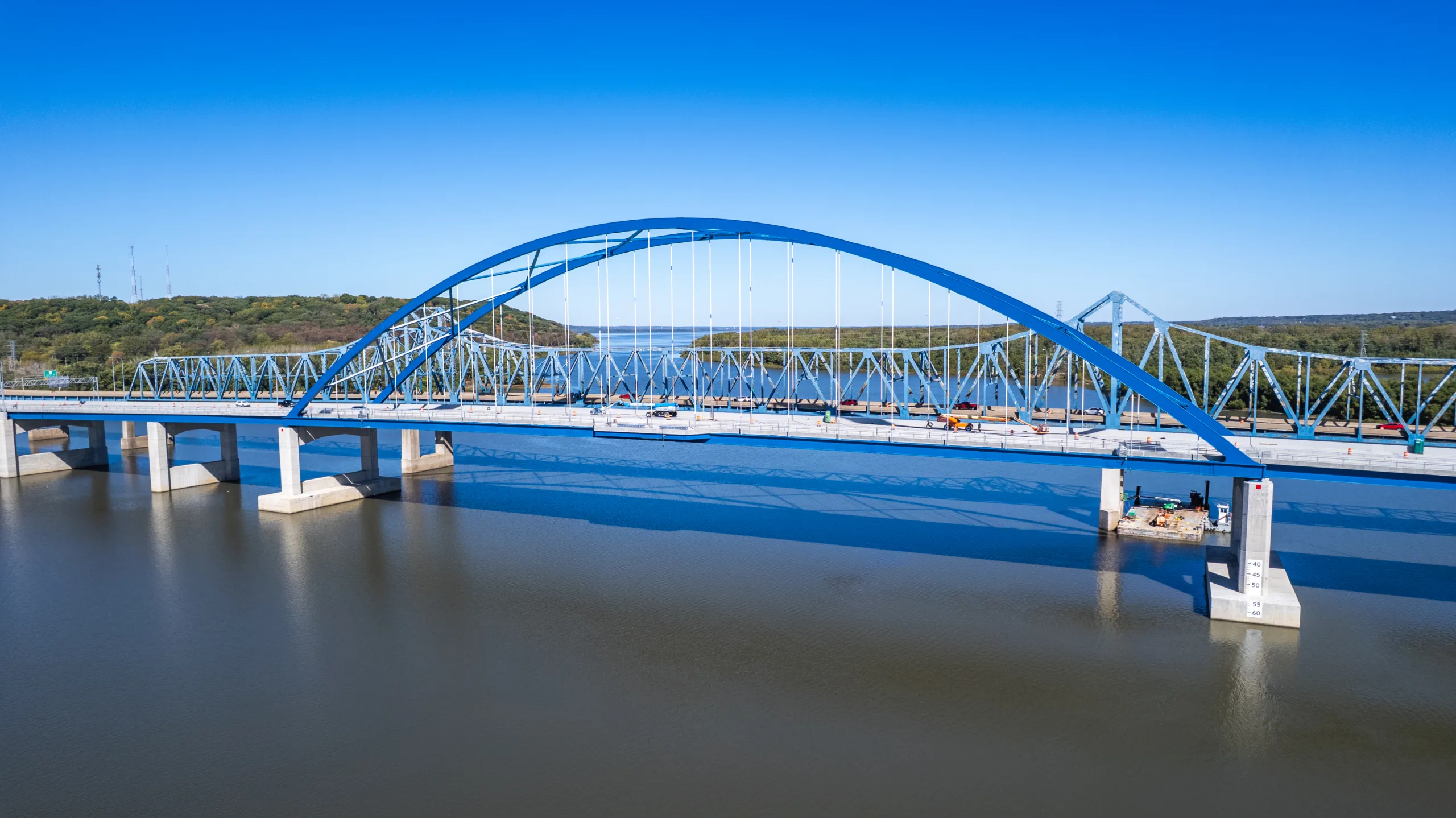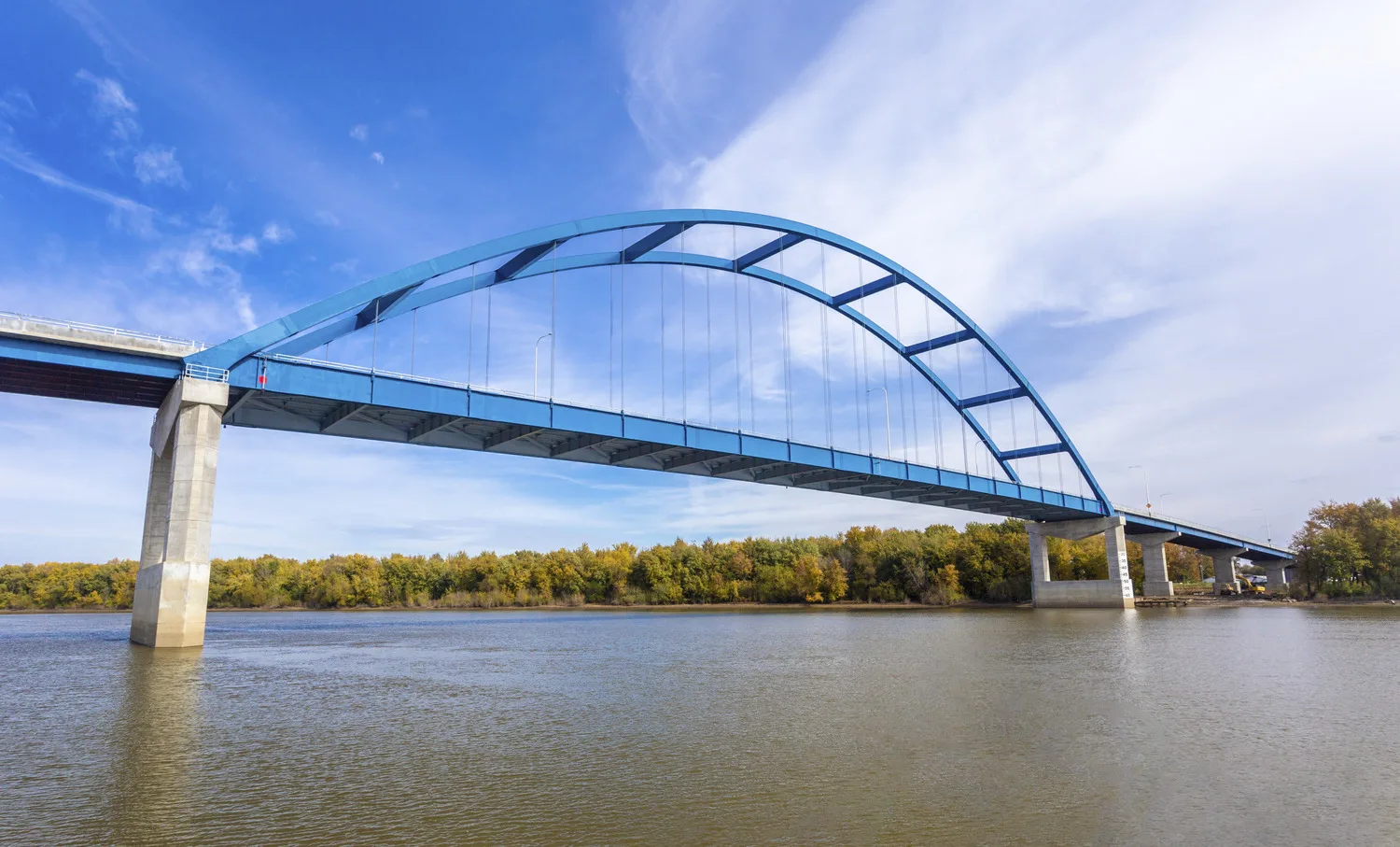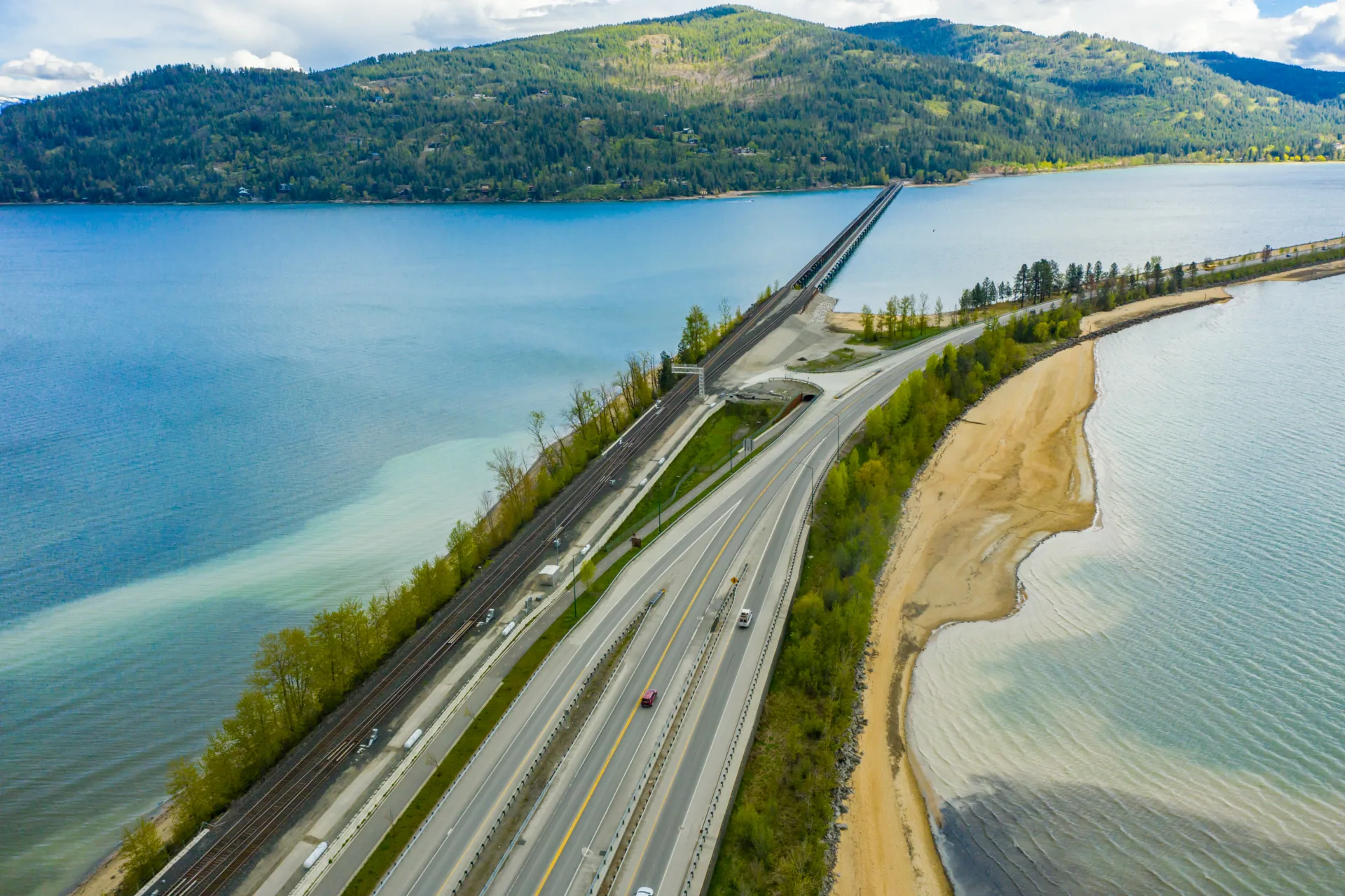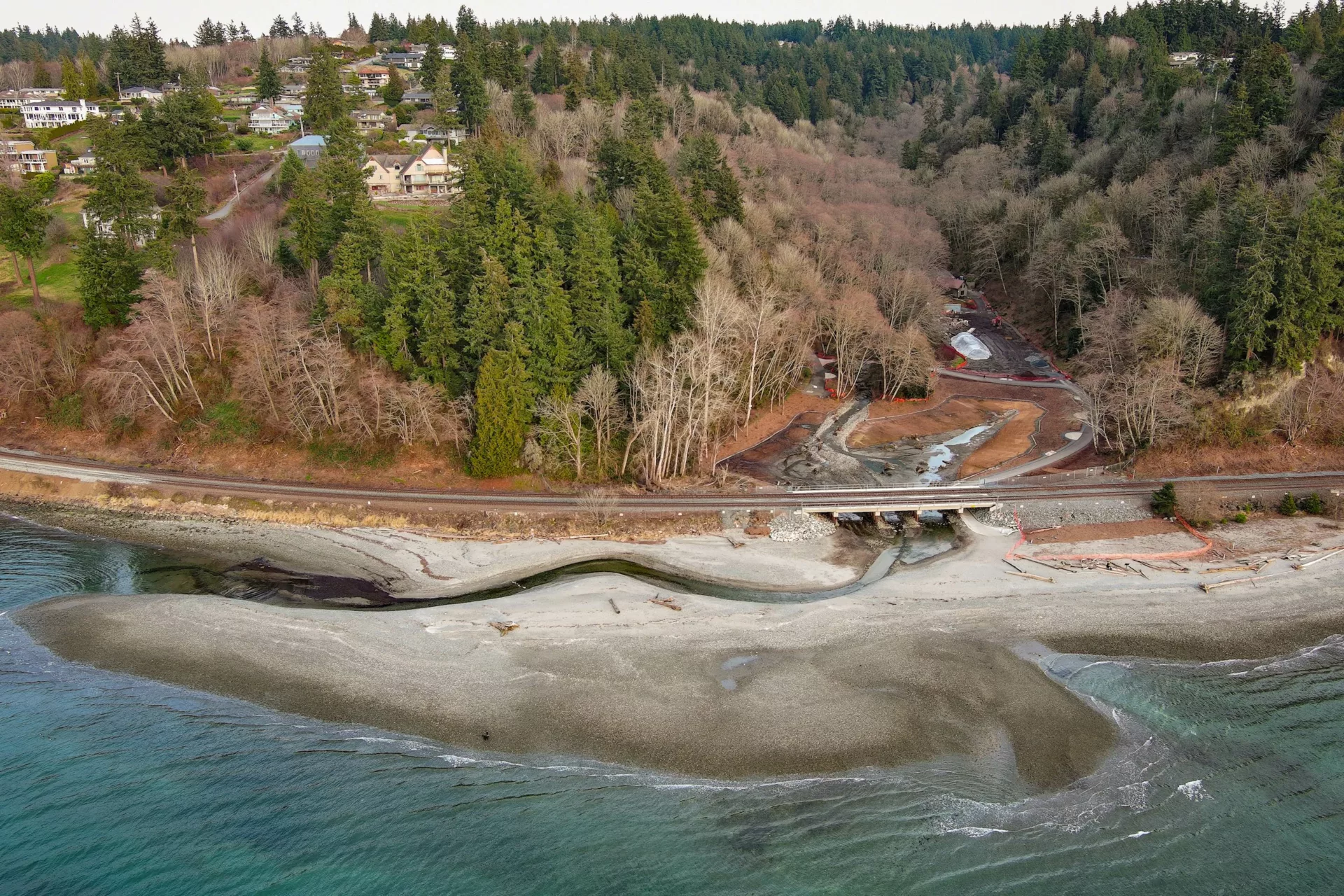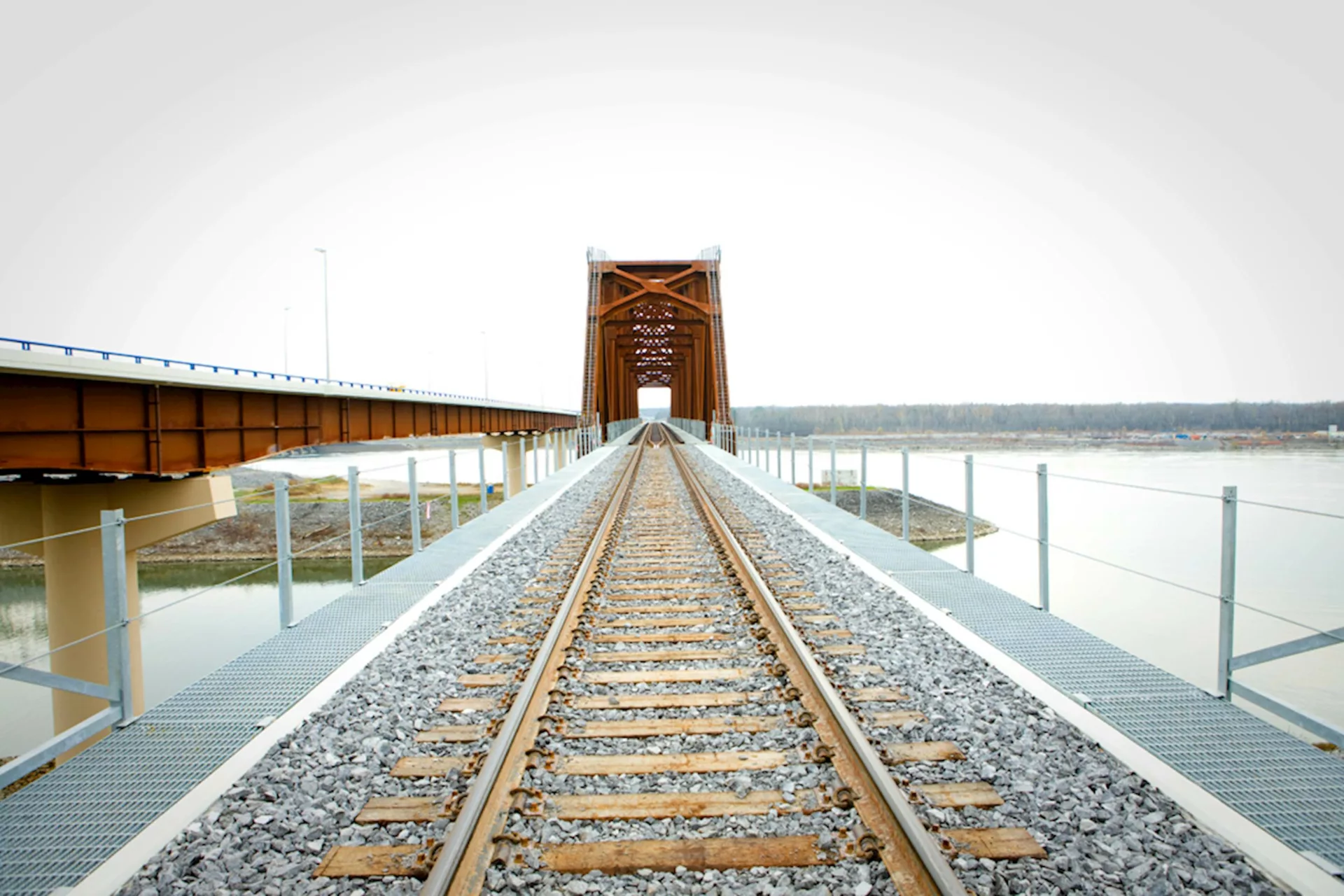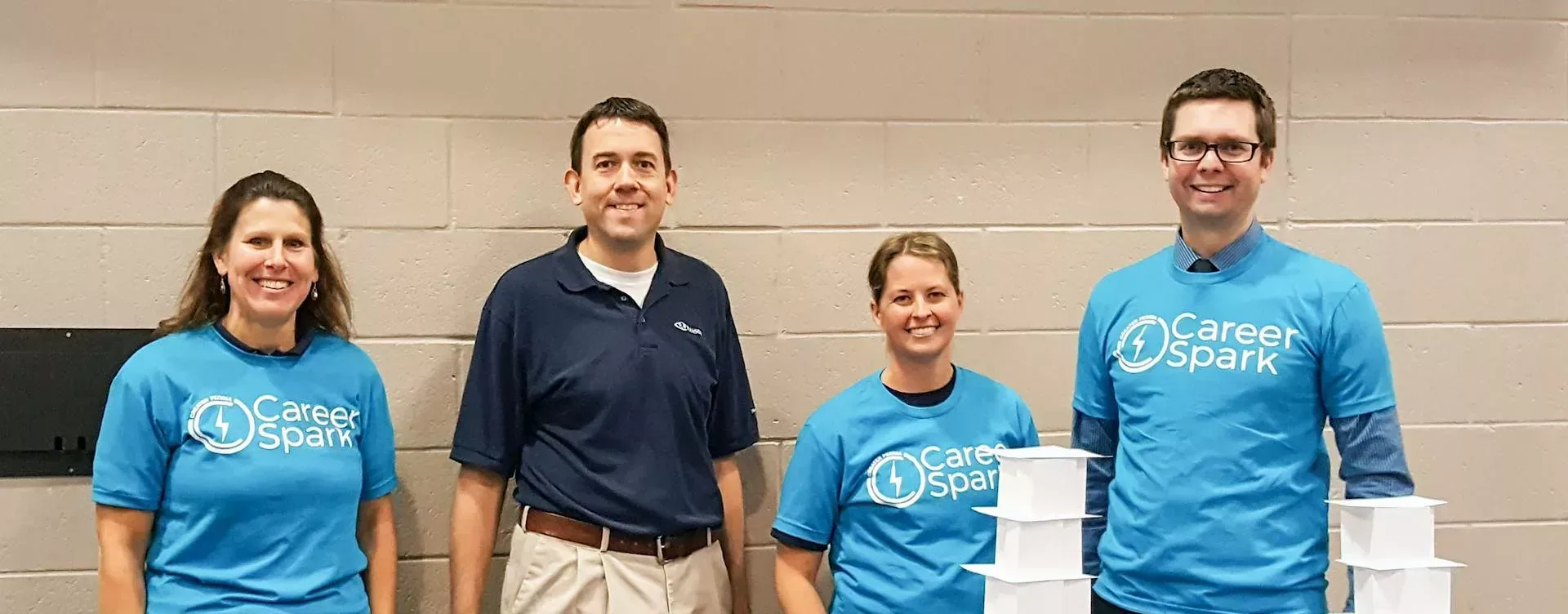Originally designed in 1939 and completed in 1948, the McClugage Bridge, which spans east to west across U.S. 150 over the Illinois River in Peoria and Tazewell County, Illinois, has its roots in the post-World War II era. The steel cantilever structure served automobile travelers for more than 70 years, with several repairs and significant rehabilitation work during that time, and a second bridge was added in 1982 to separate eastbound and westbound traffic.
In 2013, after the Illinois Department of Transportation (IDOT) and Federal Highway Administration had deemed the historical bridge to be near the end of its useful life, IDOT chose Hanson and joint-venture partner TYLin to provide phases I and II engineering services for the new bridge.
Hanson led Phase I efforts for an alternatives analysis and environmental approvals, while TYLin took the lead on Phase II construction document preparation. IDOT released both phases of the project simultaneously, an unusual scenario, to expedite the new bridge’s construction. With the construction funding already in place for the new structure, Hanson and TYLin undertook an expedited timeline.
The project was a high priority for IDOT, because the bridge was reaching the end of its useful life. Substantial deterioration had occurred throughout the structure, and substantial maintenance was required to maintain its operation.
Phase 1 engineering services
- geometric studies
- environmental assessment
- data collection
- land, route, topography and hydraulic survey
- hydraulic studies
- coordination with all agencies
- public involvement activities
- crash analysis
- right-of-way information
- traffic management analysis
- preliminary staging plans
The structure borings necessitated the use of a barge to obtain the required geotechnical information.
Phase II engineering services
- roadway plans
- bridge plans for the east approach spans and main span piers
- vessel collision study
- peer review of the deck-tied arch plans
- traffic management plan
- maintenance of traffic/staging plans
- railroad coordination
- construction support
As part of the Phase I engineering, Hanson was the lead for all environmental permitting, including U.S. Army Corps of Engineers (USACE) Section 404 and Section 408 permits. During Phase I, a 408 permit was requested because the project’s construction spanned a navigable waterway. Through its due diligence and environmental investigation, Hanson prepared thorough research that allowed the USACE to provide the 404 and 408 permits simultaneously.
Obstacles and solutions
The project team encountered a unique challenge in that the existing structure was nearly a mile long and crossed a portion of the Illinois River with dynamic flooding characteristics. Just to the north of the bridge was a narrow flowpath for the river that transitioned into a bend through the bridge.
Working with the Illinois Department of Natural Resources, USACE and U.S. Coast Guard, Hanson developed hydraulic models showing that the integration of the new structure would not raise river levels while structurally evaluating foundation types that would need to be constructed through the muck outside the main navigation channel.
Using 2D modeling software to more precisely evaluate the flooding conditions and provide better data for structural design, Hanson met the expectations of each agency within the expedited timeline to gain the approval for construction. The 2D hydraulic models Hanson created for the structure were among the first of their kind for a project in Illinois.
Public engagement
With the project team, Hanson organized public involvement activities throughout the course of the Phase I study, sending early coordination letters to local, state and federal agencies; elected officials; utility companies; schools and colleges; and interest groups.
To guide the project development process and make recommendations, Hanson and the project team created a study group. Local, state and federal officials learned about key project milestones through two elected-official briefings.
The project was developed through the National Environmental Policy Act 404 merger process, which is an integrated process that facilitates the consideration of the concerns of regulatory and resource agencies at key project decision points. Hanson also held meetings individually with several agencies to coordinate project issues pertaining to each agency.
Furthermore, the project team formed a stakeholder advisory group to directly engage key stakeholders for community input, identify and address local concerns and build public interest and trust.
Two public informational meetings and one public hearing were held throughout the course of the study, along with numerous individual stakeholder and study group meetings.
The new McClugage Bridge, whose construction began in spring 2019 and was completed in 2025, improves traffic capacity and safety, reduces travel time and incorporates a trail and bridge vantage point for cyclists and pedestrians.
